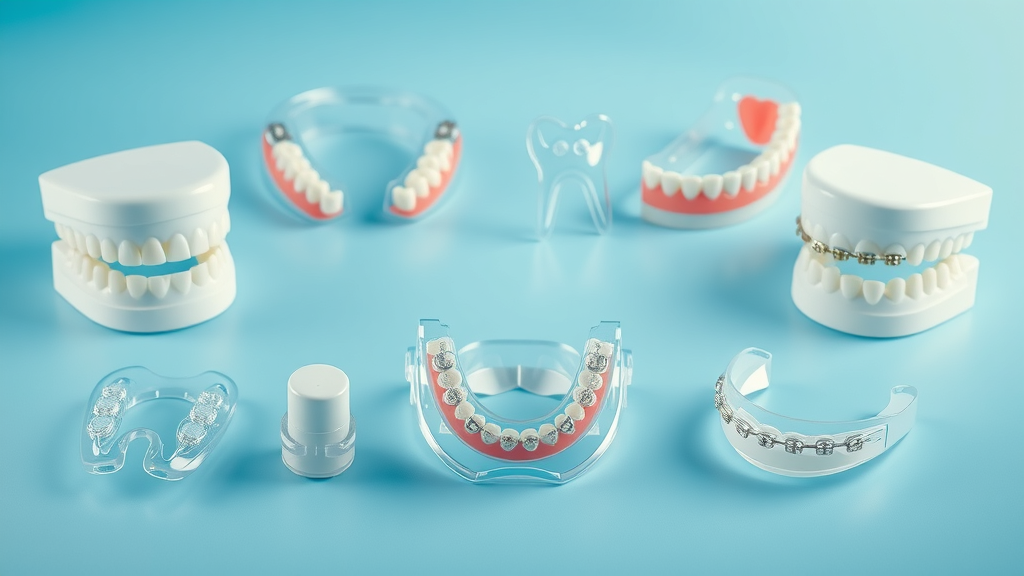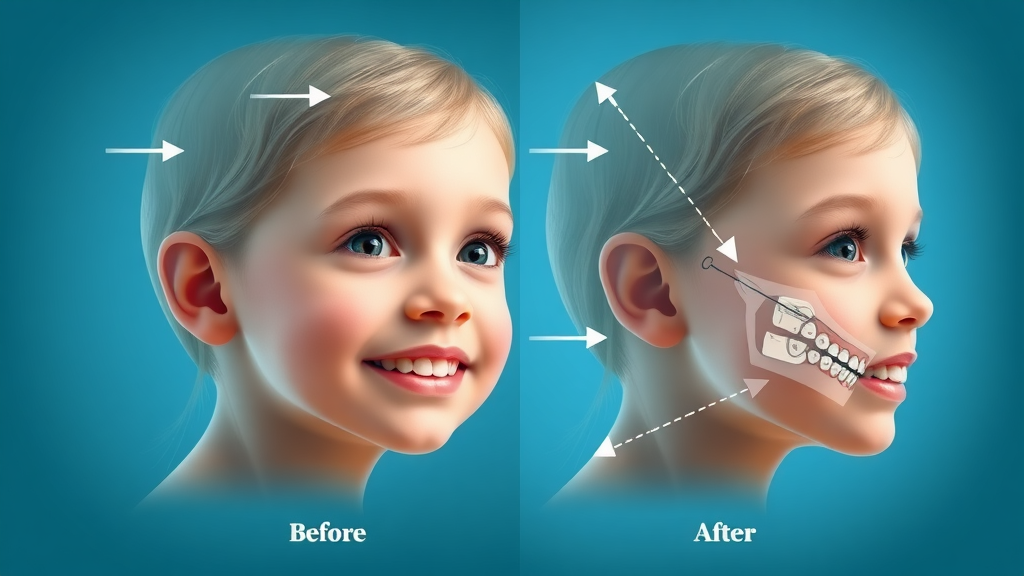Did you know that nearly 4 out of 5 orthodontists recommend having a child’s first orthodontic evaluation by age 7? This surprising fact could be the difference between a simple tweak now or complex treatment in the future. The journey to a healthy, beautiful smile often starts earlier than you might think. In this guide, we’ll explore how early orthodontic treatment might help prevent major dental and jaw concerns down the road, saving families time, stress, and money.
Startling Facts: Why Early Orthodontic Treatment Matters
Many parents believe they need to wait until their child’s teen years for orthodontic care. However, research and experts point to the value of early orthodontic intervention. By evaluating children around the age of 7, orthodontists can catch problems before they worsen. This allows for gentle guidance of the growth of the jaw and permanent teeth, making future treatments less invasive or even unnecessary. According to the American Association of Orthodontists, early intervention leads to better jaw growth and often prevents the need for extractions or jaw surgery later in adolescence. Starting early gives your child the best possible chance for a healthy bite, improved oral hygiene, and a confident smile.

"According to the American Association of Orthodontists, children should get their first orthodontic evaluation by age 7 to identify issues before they escalate." – Dr. Carter
What You'll Learn About Early Orthodontic Treatment
How early orthodontic treatment works
Key signs your child may benefit
Types of appliances used
The impact on jaw growth and facial symmetry
Common questions answered
Overview: What Is Early Orthodontic Treatment?
Defining Early Orthodontic Care and Early Orthodontic Evaluation
Early orthodontic treatment, also known as interceptive or Phase 1 treatment, refers to orthodontic care that begins before all permanent teeth have come in—often between ages 6 and 10. The goal is not just to straighten teeth, but to guide the growth of the jaw and address developing bite problems early on. An early orthodontic evaluation involves a thorough look at your child’s oral health, jaw alignment, and dental growth patterns. Orthodontists use exams, x-rays, and sometimes 3D imaging to detect crowding, spacing, and bite irregularities. By seeing an orthodontist at this young age, you’re giving your child a head start in managing future dental issues, minimizing the risk of more invasive orthodontic treatments later.
The evaluation is gentle and focused on gathering information to build a preventative treatment plan. Even if no immediate action is needed, regular monitoring can ensure your child’s teeth and jaw develop properly. This proactive approach supports lifelong oral health and sets the stage for a more beautiful smile as your child grows.
How Does Early Orthodontic Treatment Differ from Traditional Orthodontic Care?
Unlike traditional orthodontic treatment, which typically happens after most permanent teeth have erupted in the early teen years, early orthodontic care seeks to address issues as soon as they’re detected. Phase 1 focuses on correcting jaw growth problems, creating space for permanent teeth, and guiding tooth eruption to avoid crowding or misalignment. Traditional braces can still be part of the process later—often as a second phase—but early intervention often means less time spent in braces, fewer extractions, and lower overall treatment time and costs.
The tools for early treatment go beyond braces, including expanders, space maintainers, and other orthodontic appliances designed specifically for growing jaws. The main idea is that by treating issues early, orthodontists can shape how the teeth and jaws develop, preventing many problems before they require complex solutions. This preventive mindset is at the heart of modern orthodontic care.

Why Early Orthodontic Treatment? Prevention vs. Reaction
The Goals of Early Orthodontic Intervention
The aim of early orthodontic intervention is simple: prevent small problems from becoming big ones. By guiding the growth of the jaw, orthodontists can ensure a healthier bite and better overall facial symmetry. Early treatment may reduce or even eliminate the need for tooth extractions, jaw surgery, or lengthy braces in the teen years. Often, children who receive early treatment can enjoy a more comfortable, effective second phase of orthodontics—if one is needed at all.
When parents act sooner rather than later, it’s possible to encourage proper jaw alignment, keep the airway open for better breathing, and set the foundation for a lifetime of healthy oral hygiene. Early orthodontic care also boosts a child’s confidence by improving their smile and making it easier to care for their teeth every day.
Guiding jaw growth
Reducing need for extractions or surgery
Preventing future dental and orthodontic issues
Signs Your Child May Need Early Orthodontic Intervention
Recognizing Orthodontic Issues: Crowding, Bite Problems, and More
Some signs that your child may need early orthodontic treatment are easy to spot, while others are less obvious. Crowding—when there’s not enough space for the teeth to fit properly—is a key signal, as is difficulty biting or chewing, or visibly misplaced teeth. Problems with the bite, such as overbite, underbite, or crossbite, can often be caught in early childhood. Orthodontic issues like these may lead to future dental complications, jaw pain, or speech issues if left unaddressed.
Other red flags include late or early loss of baby teeth, prolonged thumb sucking or tongue thrusting, and mouth breathing. If your child’s teeth look crowded or their jaws appear misaligned, an early orthodontic evaluation can help determine if intervention is necessary. Acting during the growing years gives orthodontists the best window to guide healthy development and reduce the severity of later orthodontic treatments.

Habits That Signal Early Treatment: Thumb Sucking, Mouth Breathing
Habits like thumb sucking and mouth breathing aren’t just quirks—they can significantly affect how the teeth and jaws develop. Persistent thumb sucking after age 5 can push teeth out of place, creating open bites or misalignments. Mouth breathing, often due to allergies or nasal blockages, can impact jaw growth and facial symmetry. Both habits, alongside prolonged pacifier use or tongue thrusting, can point to the need for early orthodontic evaluation.
If you notice any of these signs, don’t wait for permanent teeth to come in. Schedule an early orthodontic checkup to get a professional opinion on whether your child would benefit from interceptive treatment or monitoring.
"Early orthodontic assessment often leads to simple solutions rather than complex ones later." – Dr. Smith, Orthodontic Specialist
The Phase 1 Orthodontic Treatment Process Explained
What Happens During an Early Orthodontic Exam?
During a typical early orthodontic exam, the orthodontist will review your child’s dental and medical history, perform a visual inspection of the teeth and jaws, and take x-rays or photographs to assess jaw growth and tooth positioning. Digital modeling or 3D scans may also be performed to create a detailed treatment plan. The focus is on identifying any developing bite problems, crowding, or other orthodontic issues that could complicate future dental health.
Most importantly, the orthodontist will provide guidance on whether immediate treatment is recommended or if monitoring growth is sufficient. For many children, starting Phase 1 orthodontic treatment at the optimal time is the key to guiding proper jaw alignment, preserving space for permanent teeth, and making future dental needs less intensive.
Typical Early Orthodontic Appliances: Expanders, Partial Braces, and Space Maintainers
Phase 1 orthodontic treatment may involve specialized appliances designed for growing mouths. Common tools include:
Expanders: Used to widen the upper jaw, creating more space for incoming teeth and correcting crossbites.
Partial Braces: Sometimes used to correct bite alignment or move select teeth into their proper position.
Space Maintainers: Keep the gap open when baby teeth are lost early, preventing other teeth from shifting.
Each of these orthodontic appliances is customized to your child’s needs, with gentle forces used to guide growth and make room for a full set of permanent teeth. The right appliance, at the right age, can dramatically reduce the need for major treatment later on.

Guiding Growth: How Early Orthodontic Treatment Influences Jaw and Facial Development
One of the biggest advantages of early orthodontic care is the ability to guide developing jaws and facial structure. Correcting the jaw’s growth trajectory early can result in a more balanced profile and improved symmetry. When issues like crossbites, underbites, or severe crowding are addressed during this window of growth, the teeth and jaws are more responsive to gentle correction, often making the changes more stable in the long run.
This guidance helps ensure that the facial features develop harmoniously, giving your child a healthier bite, a stronger airway, and—in many cases—a more beautiful smile. By steering clear of severe problems early, you are giving your child the healthiest foundation for future dental and overall health.
Comparison of Early Orthodontic Treatment Outcomes vs. Delayed Treatment |
||
Factor |
Early Treatment |
Delayed Treatment |
|---|---|---|
Jaw Growth |
Guided, more symmetrical |
Risk of asymmetry |
Extractions/Surgery |
Often avoided |
More likely required |
Length of Treatment |
Shorter overall |
Longer, more complex |
Cost |
Often lower |
Can be higher |

Early Orthodontic Treatment and Oral Hygiene: Establishing Healthy Habits
How Early Orthodontic Treatment Improves Oral Hygiene
Aligning teeth earlier can make everyday dental care much easier for children. When teeth are crowded or crooked, plaque builds up in hard-to-reach places, raising the risk of cavities, gum disease, and future dental issues. With proper early alignment, brushing and flossing become more effective, protecting your child’s oral health as they grow.
Reducing hard-to-brush areas
Lowering risk of dental issues
Encouraging lifetime dental care
Caring for your child’s smile from an early age encourages positive oral hygiene routines that last a lifetime. This not only means fresher breath and fewer cavities but can also save your family time and discomfort from unnecessary dental treatments in the future.
Cost Implications: Can Early Orthodontic Treatment Save Money?
One of the most practical benefits of early orthodontic intervention is cost savings. While orthodontic care involves an upfront investment, treating small issues early is often far less expensive than addressing serious dental problems later on. By preventing the need for extractions, jaw surgery, and more complex braces, families can save significantly on both time and money in the long run. Insurance plans also frequently cover a portion of early orthodontic evaluation and treatment, making it more accessible than ever for proactive families.
"Investing in early care often means fewer and less invasive treatments later." – Financial Counselor, Grand Strand Smile
Common Questions Answered: Early Orthodontic Treatment FAQs
What are the benefits of early orthodontic treatment?
Early orthodontic treatment can solve many problems before they start. By guiding jaw growth, creating space for permanent teeth, and correcting bite issues early, children often spend less time in braces later and require fewer invasive treatments. Parents find that early intervention supports both dental health and self-confidence, while potentially lowering treatment costs and stress for the whole family.
Is it better to get braces early or later?
There’s no single answer; the best timing depends on the individual child’s needs. For many, starting treatment around age 7 allows orthodontists to intervene at the right developmental stage. This can make later treatments shorter and less complex. However, every child’s situation is unique, so working with a specialist is key to finding the optimal path.
What is the best age for orthodontic treatment?
The American Association of Orthodontists recommends that children get their first orthodontic check-up by age 7. This early evaluation helps catch problems before they progress and lets parents and orthodontists plan the best possible care for the future.
What happens if you get braces too early?
Starting braces before your child’s mouth is ready can sometimes lead to a longer overall treatment time or less effective results. That’s why Phase 1 evaluations are important: they ensure that treatment begins at the right time, with the right strategy, for your child’s specific needs.
People Also Ask: Can Early Orthodontic Treatment Prevent More Serious Issues Later?
What are the benefits of early orthodontic treatment?
Answer: Early orthodontic treatment can address issues before they worsen, minimizing the need for extraction or surgery, guiding proper jaw growth, and improving oral health outcomes overall.
Is it better to get braces early or later?
Answer: For many patients, early intervention decreases the complexity of later treatment, though the right timing varies by individual case and should be assessed by an orthodontic specialist.
What is the best age for orthodontic treatment?
Answer: The American Association of Orthodontists recommends initial evaluation by age 7, when many developmental concerns can first be spotted.
What happens if you get braces too early?
Answer: Starting too early can sometimes lead to a longer treatment period overall; that's why phase 1 evaluation is critical to determine optimal timing.
Key Takeaways on Early Orthodontic Treatment
Early orthodontic assessment is vital
Early intervention can prevent complex dental issues
The right timing varies — consult a professional
Early care can reduce costs and treatment time
Conclusion: Is Early Orthodontic Treatment the Best Step for Your Child?
Proactive orthodontic care during childhood can prevent major dental issues, reduce treatment time, and support lifelong oral health. Consult your local orthodontist to discuss the best approach for your child’s unique needs.

Next Steps: Get Informed and Protect Your Family's Smile
"Your smile is worth it — and staying informed is the first step. Join hundreds of locals already following Grand Strand Smile Spotlight for updates, advice, and trusted care insights." – Grand Strand Smile Team
Early orthodontic treatment, also known as interceptive orthodontics, involves evaluating and addressing dental issues in children, typically around the age of seven. This proactive approach aims to guide the growth and development of a child’s teeth and jaws, preventing more severe problems in the future.
Key Benefits of Early Orthodontic Treatment:
Prevention of Severe Dental Problems: By identifying and addressing issues like misaligned bites or crowding early, orthodontists can reduce the need for complex treatments such as surgery or tooth extractions later in life. (dentalstudio4kids.com)
Guidance of Jaw Growth: Early intervention allows orthodontists to guide the growth of the jaw, ensuring proper alignment and proportion. This can correct bite issues and create sufficient space for incoming permanent teeth. (royalorthodontics.com)
Improved Self-Esteem: Addressing dental issues early can enhance a child’s appearance, boosting their confidence and self-image during formative years. (royalorthodontics.com)
Enhanced Oral Health: Properly aligned teeth are easier to clean, reducing the risk of cavities and gum disease. Early treatment can lead to better oral hygiene practices and overall dental health. (royalorthodontics.com)
Reduced Treatment Time: Early intervention can simplify later treatment phases, potentially reducing the time and complexity of treatment during adolescence. (royalorthodontics.com)
By addressing orthodontic issues at a young age, early treatment not only improves oral health but also contributes to a child’s overall well-being and confidence.
 Add Row
Add Row  Add
Add 




Write A Comment